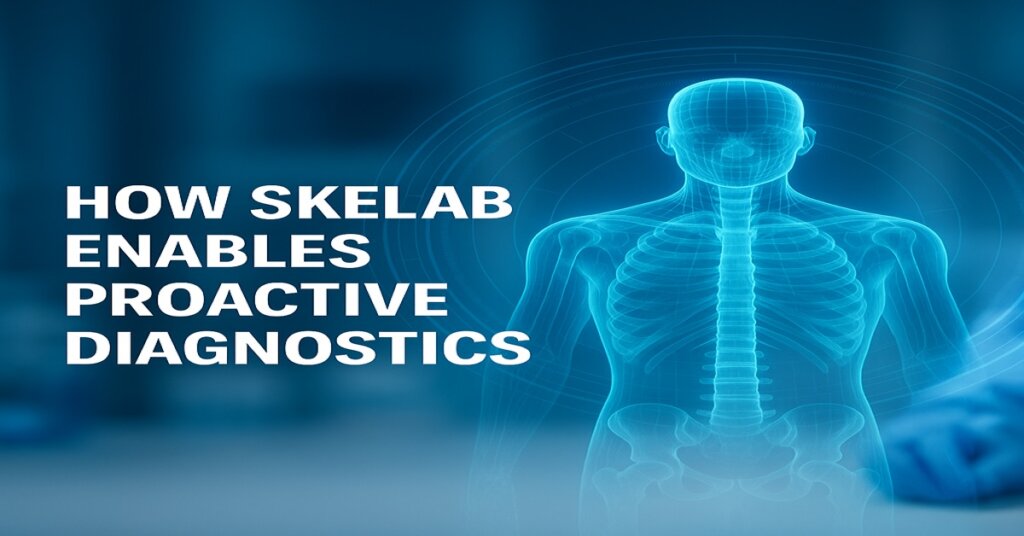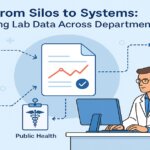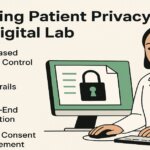
How Skelab Enables Proactive Diagnostics
From reactive results to predictive insights: unlocking smarter healthcare through clinical lab data
In modern medicine, diagnosis is no longer just about responding to symptoms. It’s about predicting risk, preventing escalation, and guiding early intervention. That’s where your clinical laboratory becomes more than a service—it becomes a source of foresight.
With Skelab, labs move beyond reporting results. They become active players in proactive diagnostics—helping clinicians identify patterns, flag abnormalities early, and personalize care like never before.
🚦 1. Trend Tracking that Flags Risk Before It Becomes Disease
One-off results don’t tell the whole story. But patterns do.
Skelab uses built-in longitudinal tracking tools to monitor how key lab values change over time—per patient or across populations.
- Catch declining kidney function before symptoms emerge
- Detect rising inflammatory markers weeks before clinical signs
- Identify pre-diabetic glucose patterns based on subtle shifts
💡 Proactive Value: The lab sees it before the doctor does.
🔍 SEO Tip: “trend analysis in lab results,” “early disease detection with LIS”
📊 2. AI-Powered Anomaly Detection for Subclinical Conditions
Skelab’s intelligent rules engine and optional machine learning modules analyze:
- Out-of-range but borderline-normal results
- Repeating test requests with gradual change
- Multivariable patterns across bloodwork, hormone levels, enzymes, and more
These are not just alerts—they’re insights backed by data models tuned to your lab’s history.
🧠 Human-Centered Angle: Reduce cognitive overload for clinicians by surfacing meaningful outliers, not noise.
🧬 3. Personalized Baselines = Smarter Flags
Every patient is different—and so is their “normal.”
Skelab allows labs to set individualized reference ranges based on prior data, medical history, or even age/gender-adjusted values.
- A hemoglobin drop from 14.5 to 12.0 may be “normal,” but not for that patient.
- Small elevations in liver enzymes for one patient may trigger review, while another’s don’t.
👤 Benefit: Skelab brings context to numbers, so interpretation is faster and more accurate.
🔍 SEO Tip: “custom lab thresholds,” “patient-specific alerts in LIS”
📡 4. Clinical Communication Tools That Close the Loop
When a predictive alert is triggered, Skelab can:
- Auto-flag it in the physician’s dashboard
- Send secure, role-specific notifications
- Attach relevant historical comparisons or interpretive notes
- Trigger next-step workflows (e.g., retesting, imaging orders)
🧑⚕️ Human Benefit: Clinicians aren’t overwhelmed with raw data—they’re guided toward the right action.
🌐 5. Population-Level Trends for Public Health and Prevention
Skelab allows de-identified, aggregated data to be analyzed across:
- Communities
- Age groups
- Chronic disease cohorts
- Time periods (e.g., pre-/post-vaccine rollouts)
💬 Use Case: Detect rising vitamin deficiencies in a local region or increased cardiac risk markers in a population before spikes in hospitalization.
🔍 SEO Tip: “LIS for population health,” “lab-based predictive public health tools”
📥 6. Seamless Integration with EMR and EHR Platforms
Skelab supports HL7/FHIR integration and custom APIs to pull in:
- Diagnoses
- Medication history
- Imaging
- Vitals
This gives the lab context-aware diagnostics that surface insights based on more than lab values alone.
🔗 Pro Insight: A borderline TSH may trigger a thyroid panel request—only if patient is already showing fatigue and weight changes in their EHR.
✅ Final Thought: The Lab of the Future Starts Now
Labs don’t need to wait for problems to act.
With Skelab, they become engines of foresight, not just endpoints for verification.
Early detection, personalized alerts, and intelligent reporting—that’s how Skelab transforms diagnostics into proactive care.
Have questions? Contact us, we’re always ready to assist.





